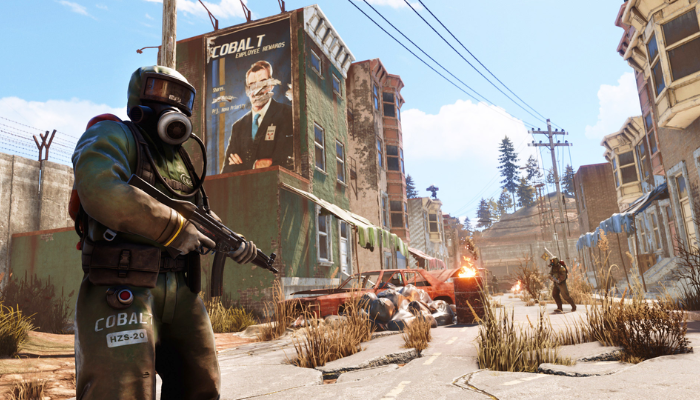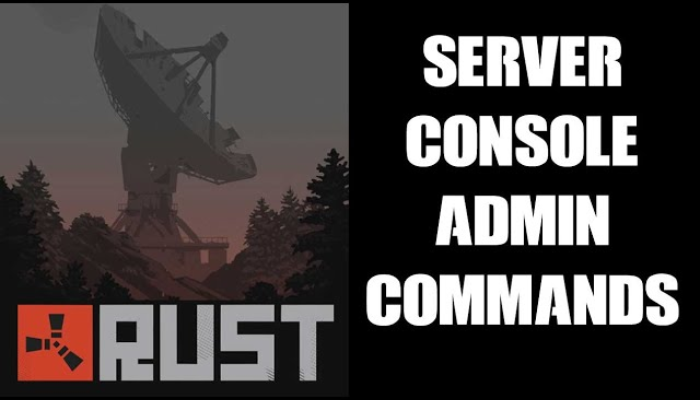Rust, the popular survival game, challenges players to thrive in a hostile environment. As an admin of a Rust server, it’s crucial to understand the various Rust console admin commands that can help you manage the gameplay, enforce rules, and enhance the overall experience for everyone. Whether you’re controlling a small server or running a large-scale operation, mastering these commands can elevate your ability to navigate and control the world of Rust. In this article, we’ll explore the most important and powerful Rust console admin commands to help you unlock the full potential of your server.
Getting Started with Rust Console Admin Commands
Understanding the Basics of Admin Commands
Before diving into the world of Rust console admin commands, it’s important to know how to activate them. The commands are entered through the game’s console, which can be accessed by pressing the F1 key (on PC). However, console commands in Rust are available only to players with admin privileges. To use admin commands, the player must either be logged in as the server owner or granted admin rights through the in-game permissions system.
Some common commands that players should begin with include addadmin, which grants admin privileges, and removeadmin, which revokes those privileges. These foundational commands will allow you to control who can execute higher-level admin functions. Once you’ve mastered the basics, you can proceed to more advanced commands for server management.
Why Admin Commands Are Essential
As an admin, you hold the power to shape the gameplay for yourself and others. Rust console admin commands allow you to control the server environment, including setting up the game mode, spawning items, kicking or banning disruptive players, and more. Admin commands help maintain order and balance, especially in multiplayer environments, where chaos can ensue without proper oversight. With the right knowledge and practice, you can ensure a smoother gaming experience and even have some fun experimenting with different features.
Core Rust Console Admin Commands for Server Management
Managing Server Settings
One of the most important aspects of Rust console admin commands is the ability to modify server settings on the fly. Commands such as server.hostname allow you to change your server’s name, while server.description lets you update the server description, helping new players get a better sense of what to expect. If you’re running a private server, it’s crucial to customize these settings to suit your community’s needs.
For example, the server.save command ensures that the current game state is saved, while server.writecfg writes changes made in the server’s configuration file. This is especially useful when you’ve made adjustments and want to ensure they persist after restarting the server. By using these commands effectively, you can easily maintain a stable and tailored Rust environment for all players.
Controlling Day-Night Cycle and Weather
Managing the day-night cycle and weather in Rust is another powerful feature of admin commands. Players often prefer specific conditions for gameplay, whether it’s perpetual daylight for building or a stormy setting for added difficulty. The env.time command, for example, allows admins to set the in-game time. You can use env.time 1200 to set the time to noon, or change it to env.time 2100 for a night-time setting.
Additionally, admins can adjust the weather conditions by using commands like env.weather fog, env.weather rain, or env.weather clear. This level of control gives admins the power to create the perfect atmosphere for players, whether it’s for roleplaying, building, or PvP action.
Player Management with Rust Console Admin Commands

Kicking and Banning Players
As an admin, you may encounter players who break server rules or disrupt gameplay. Rust console admin commands provide several options for controlling these types of players. The kick command allows you to quickly remove a disruptive player from the server without permanently banning them. For example, kick PlayerName will disconnect a player from the game, while giving you the chance to warn them or take further action.
If a player has been particularly troublesome, the ban command can be used to ban them from the server entirely. This command can be followed by the player’s username or Steam ID. For instance, ban PlayerName 30d will ban the player for 30 days. You can also issue a permanent ban with ban PlayerName, making it easy to maintain order on your server.
Granting and Removing Admin Privileges
When managing a server, it’s crucial to keep track of who has admin privileges. The addadmin and removeadmin commands are designed to manage admin roles. For instance, typing addadmin PlayerName will grant the player admin privileges, allowing them to access higher-level commands. On the other hand, removeadmin PlayerName revokes admin status from that player, preventing them from using admin commands in the future.
These commands help keep your server’s authority structure intact. If you’ve entrusted certain players with admin rights, you’ll want to monitor their behavior. Ensuring that the right people hold admin privileges will help avoid conflicts and ensure the rules are consistently enforced.
Spawn Items and Resources with Rust Console Admin Commands
Spawning Items for Gameplay
One of the most popular uses of Rust console admin commands is spawning items directly into the game. This is especially useful for admins who want to provide players with resources or tools, test items, or quickly recover from a disaster. To spawn an item, use the give command followed by the item name and the quantity. For instance, give PlayerName stone 1000 will give a player 1,000 stones.
Admins can also use the spawn command to generate entire objects or NPCs in the game. For example, spawn bear would generate a bear in the vicinity of the admin. These item-spawning commands are particularly useful when managing events or testing certain mechanics on the server.
Spawning Resources for Server Events
For server administrators who host events or special activities, the ability to spawn resources and items in bulk can add excitement and variety. Using the spawn command, you can create anything from resources like wood and metal ore to powerful weapons and NPCs. Commands like spawn weapon.ak47 will give players access to rare and powerful weapons, which can be especially useful for PvP events.
You can also spawn various resources such as spawn supply.signal, which will create a supply signal item, or spawn airdrop, which summons an airdrop, adding strategic value to your server and gameplay.
Advanced Rust Console Admin Commands for Experienced Admins
Handling the Economy System
For Rust server admins who want to introduce an economy system, there are several commands that help manage server currency and trades. Using the economy.add command, you can add or subtract currency to/from a player’s balance. This can help you set up trading systems, auctions, and other in-game economies. It’s a feature that adds a deeper layer of gameplay and player interaction to your server.
Using Plugins and Custom Commands
Experienced server admins often rely on custom plugins to enhance their server’s features. While Rust console admin commands cover many of the basics, plugins provide additional functionality. For example, the Oxide modding platform offers a wide variety of custom plugins, such as teleportation, enhanced item spawns, and automatic event triggers. Many of these plugins also come with their own set of admin commands, which can be integrated into your server management for further control.
Conclusion
Mastering Rust console admin commands is essential for any server administrator looking to create a smooth, enjoyable, and controlled gameplay experience. By familiarizing yourself with these commands, you can manage your server’s settings, control player behavior, spawn items and resources, and even customize the gameplay environment to fit your community’s needs. Whether you’re hosting a casual server or managing a large-scale operation, these admin tools provide the flexibility and power you need to run your server effectively.
Frequently Asked Questions (FAQs)
- How do I become an admin on a Rust server? To become an admin, you need to be granted admin privileges by the server owner or use the addadmin command in the console.
- What is the command to kick a player in Rust? Use the kick PlayerName command to remove a player from the server temporarily.
- Can I spawn any item in Rust? Yes, you can spawn any item using the give or spawn commands, depending on your needs.
- How can I ban a player from my server? Use the ban PlayerName command to permanently ban a player. Add a time duration for a temporary ban.
- What’s the best way to manage server settings in Rust? Use commands like server.hostname and server.description to customize your server settings and display.
- How do I change the time of day in Rust? The env.time command allows you to adjust the in-game time, such as env.time 1200 for noon.
- Can I control the weather in Rust? Yes, with the env.weather command, you can set various weather conditions like fog, rain, or clear skies.
- What are plugins and how do they work in Rust? Plugins add additional features and functionality to your server, such as custom admin commands or game modes.
- How do I give a player items in Rust? Use the give command followed by the item name and quantity, such as give PlayerName wood 1000.
- Is there a way to remove admin privileges? Yes, use the removeadmin command followed by the player’s name to revoke admin rights.





